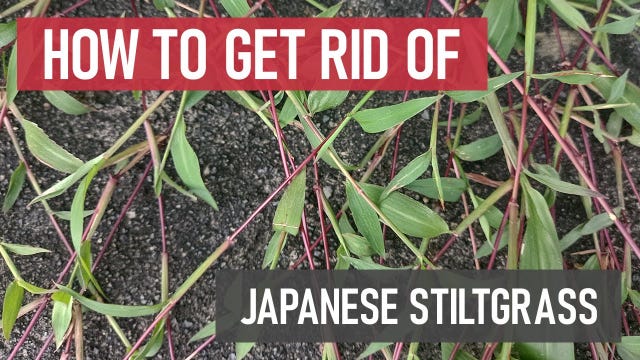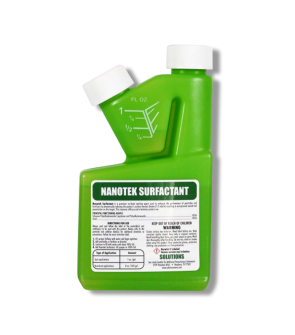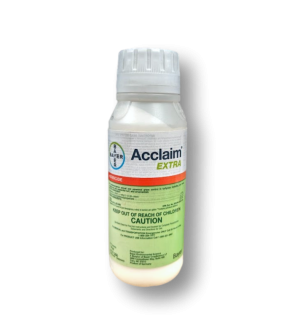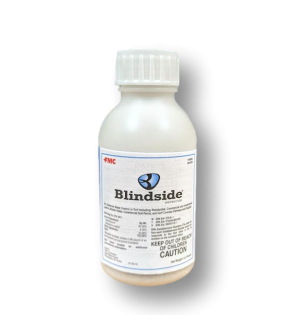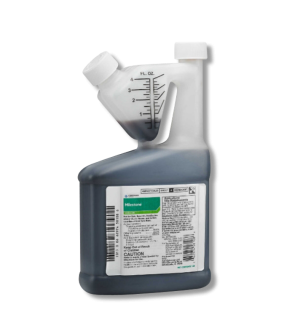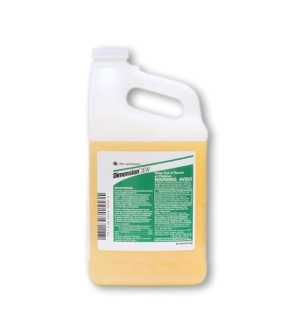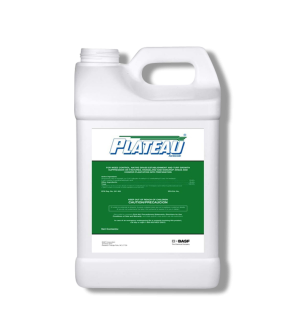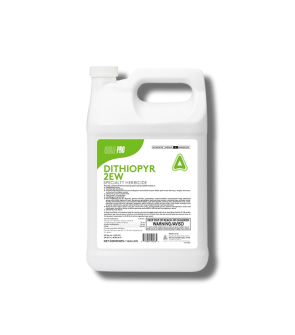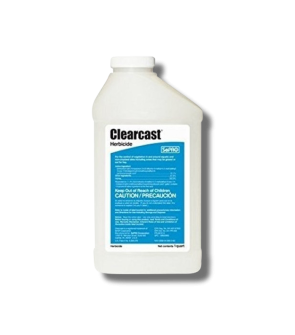Gain access to personalized product screening, the best pricing, rewards, and more!
Most Effective Products
Japanese Stiltgrass Control: How to Get Rid of Japanese Stiltgrass
This page is a general DIY guide for controlling Japanese stiltgrass. Using the suggested products and methods, you can control Japanese stiltgrass. Follow this DIY article and use the recommended products, and we guarantee 100% control of Japanese stiltgrass.
If you have spotted those pesky patches of tall, spindly grass creeping into your garden or lawn, chances are you’ve encountered Japanese stiltgrass. This invasive species has been quietly taking over yards, parks, and woodlands across the U.S. with its fast-growing, dense mats that choke out native plants.
Japanese stiltgrass, also known as mary's grass, Asian stiltgrass, Nepalese browntop, Chinese packing grass, or packing grass is a weed that grows quickly, forming thick mats that choke out native plants. As a result, this leaves your landscape looking bare and less biodiverse. Not only does it crowd out beautiful wildflowers and grasses, but it also disrupts local ecosystems by altering soil nutrients and light levels.
It’s a tricky invader, and once it takes hold, it can be tough to get rid of. But don’t worry, there are ways to fight back and restore your property. In this guide, we’ll break down everything you need to know about controlling Japanese stiltgrass, from early identification to prevention and removal with our professional tips and products.
Identification
Before proceeding with a treatment program, you must be certain you are dealing with a Japanese stiltgrass infestation. Careless identification can lead to using the wrong treatment methods, which can be a waste of time and money. Below are the following characteristics to help you understand what Japanese stiltgrass looks like.

- Japanese stiltgrass is a slender, delicate annual grassy weed that often forms dense, sprawling mats and forms stems that grow 6 feet in length. It typically grows 1 to 3.5 feet tall, with wiry, branched stems that often root at the nodes, giving it a spreading, stilted appearance.
- The stems are thick and fleshy, and can be reddish in color.
- The leaves are pale green, lance-shaped, and about 1 to 3 inches long, with a distinctive silvery-white midvein running down the center. The grass blades are broader than most other grasses. As seedlings, the blades are distinctly round, then elongate as the plant matures.
- Flowering begins in late summer, with delicate flower spikes developing in the leaf axils. Seeds are produced from late September through early October. In autumn, the foliage turns purplish before dying back in winter, leaving a dense thatch on the ground.
Use the description and image above to help you properly identify Japanese stiltgrass on your property. If unsure, contact us and send a photo of your weed through email or in person at one of our stores to help you identify the weed and suggest treatment options.
Inspection
Once you confirm you are dealing with Japanese stiltgrass, you can move on to inspection. During this phase, you will locate areas where Japanese stiltgrass is thriving and observe the conditions that allow it to thrive. This information will help you know where to focus your herbicide application.

Where to Inspect
Japanese stiltgrass can thrive in various settings, especially moist shaded environments.
Common areas for this weed to be found are flood plains, stream banks, woodlands, roadsides, landscapes, ditches, utility corridors, lawns, under trees, and other sites with disturbed soil.
What to Look For
Typically, Japanese stilgrass germinates from late winter to early spring. Once present, you will find dense, low-growing mats that have broad lance-shaped leaves with a distinct, silvery-white midvein running slightly off-center.
Treatment
After you have found and determined it is Japanese stiltgrass, you can move on to treatment. Be sure to wear the proper personal protective equipment (PPE) when handling and applying herbicides.
Herbicides containing Fenoxaprop-p-ethyl, sethoxydim, glyphosate, or glufosinate will be effective in eliminating Japanese stiltgrass.
Step 1: Mix and Apply Post-Emergent Herbicide

Applications will need to be mixed with water in a handheld pump sprayer, backpack sprayer, or spray rig.
For spot treatments with a handheld pump sprayer, add 0.30 to 0.46 fl. oz. of Acclaim Extra Herbicide per gallon of water.
Apply the lower rate when grass weeds have less than two tillers. Use the higher rate when the weed has 1 to 2 tillers.
The addition of a surfactant such as Nanotek will improve coverage.
Nanotek Surfactant is a nonionic surfactant designed to improve the adhesion and penetration of pesticides onto treated surfaces.
For spot applications, use 1 oz. of Nanotek Surfactant per gallon of spray solution. For broadcast applications, apply 8 oz. of this product per 100 gallons of spray solution.
Spray the top and bottom of weeds until wet, but not to the point of runoff.
If the weeds are still growing vigorously, you can make a second application when 14 days have passed after the first treatment.
Keep people and pets out of the treated area until the spray has dried.
Prevention
Once the Japanese stiltgrass has been eliminated, you do not want it to return. Take on some of the following measures to prevent Japanese stiltgrass:
- Preventing Japanese stiltgrass requires a combination of proactive lawn and landscape management practices aimed at minimizing soil disturbance, promoting healthy native vegetation, and reducing seed spread. The first thing to do is apply a pre-emergent herbicide such as Dimension 2EW Herbicide. This is a pre-emergent herbicide that controls various broadleaf and grassy weeds in established lawns, commercial sod farms, ornamental sites, and more. Apply 0.73 fl. oz. of Dimension 2EW Herbicide per 1 gallon of water per 1,000 sq. ft. Mix and apply with water in a handheld pump or backpack sprayer. Spray across the treatment area evenly until wet, but not to the point of runoff. When 6 hours have passed after application, irrigate the treated area with 0.5 inches of water.
- Since stiltgrass thrives in shaded, moist, and disturbed areas, maintaining dense ground cover with healthy turfgrass, native plants, or mulch is essential to outcompete seedlings. Avoid excessive mowing or clearing that leaves bare soil exposed since this creates an open invitation for stiltgrass seeds to germinate.
- Mow your grass at proper intervals to maintain a thick growing density, reduce the shade cast on your lawn by trimming overgrown shruberry and tree branches, rake away leaf litter and pick up any debris, and employ a proper watering schedule to provide the local grass with enough water to strengthen its roots, but not so much that will encourage weeds. Many grasses require 1 inch of water every week. Apply the water all at once in the morning so it has enough time to seep into the ground without evaporating in the sun.
- Controlling foot traffic and erosion, especially near woodland edges or trails, helps reduce soil compaction and disturbance that favor invasion. Prevent new infestations by cleaning shoes, tools, and equipment after working in infested areas, as seeds are easily transported on clothing and gear.
Key Takeaways
What is Japanese Stiltgrass?
- Japanese stiltgrass is an invasive annual grassy weed with pale green leaves and a silvery midvein, forming dense mats that outcompete native plants in shady, moist, disturbed areas.
How to Get Rid of Japanese Stiltgrass
- To get rid of Japanese stiltgrass, you will want to use Acclaim Extra. To increase this herbicide control, we suggest mixing it with a nonionic surfactant like Nanotek.
Preventing Japanese Stiltgrass
- Prevent Japanese stiltgrass by maintaining dense ground cover, minimizing soil disturbance, mulching bare areas, cleaning equipment, and monitoring regularly to catch and remove new growth before seeding. Be sure to apply a pre-emergent herbicide like Dimension 2EW Herbicide before weeds appear.






